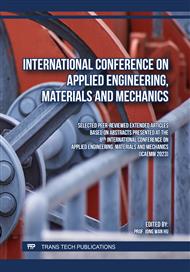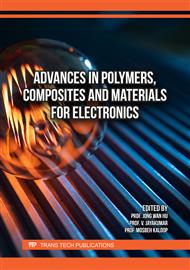p.83
p.91
p.101
p.109
p.121
p.131
p.139
p.147
p.159
Study on Adsorption of Diesel Molecules on MoS2 and NiMoS Catalysts
Abstract:
For deep insight into complex reaction system of diesel hydrotreating, the monolayer adsorption and competitive adsorption of typical reactant molecules (phenanthrene, naphthalene, acridine, quinoline, dibenzothiophene, 4,6-dimethyldibenzothiophene and H2) on MoS2 and NiMoS catalyst models with different structures were investigated. The basal plane is discovered to be the best physical adsorption position for all molecules in MoS2 series catalysts. Following saturation of the basal plane, reactant molecules will be adsorbed at Mo edge first, and Mo edge is more prone to bimolecular or multimolecular adsorption than S-edge, implying that Mo edge active sites play an important role in diesel hydrotreating. Naphthalene has a higher adsorption capacity in the partial pressure system that simulates the actual reaction atmosphere, and it is the most likely reactant molecule to predominately occupy active sites, but 4,6-dimethyl dibenzothiophene still exhibits good competition adsorption performance due to its high adsorption capacity and heat release. Interestingly, after phenanthrene adsorption, the secondary adsorption of hydrogen decreases in all of the catalyst models studied, indicating that phenanthrene is one of the most important molecules influencing hydrogen adsorption. Furthermore, the secondary adsorption of hydrogen after phenanthrene adsorption decreased the most on Tri-S50 catalyst. It shed light on that the activity and stability of Tri-S50 catalyst was most likely to decrease during diesel hydrotreating because of the notable inhibition on adsorption of hydrogen molecules brought by phenanthrene adsorption. It presents a theoretical basis for the design and development of highly efficient diesel hydrotreating catalysts.
Info:
Periodical:
Pages:
159-174
Citation:
Online since:
February 2024
Authors:
Keywords:
Price:
Сopyright:
© 2024 Trans Tech Publications Ltd. All Rights Reserved
Share:
Citation:



